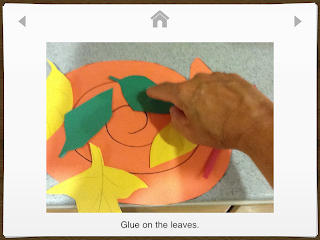When at all possible, I go into classrooms and work with my speech-language kids in that setting. I use the teacher's materials, the teacher's language (sometimes simplified), and work with groups of kids (not all of them 'mine'). The children stay in the mainstream, are learning from the core curriculum, and generally are more successful than those who are pulled out.
This week, one of my second grade students hit a roadblock. He didn't grasp the concepts of addition---that is, adding together different numbers to get the same sum (e.g. 3 + 2 is the same as 4 + 1). This concept was presented to the kids as how many people are on a bus if the top deck had so many people and the bottom deck had another number. Kids had to manipulate beads on pipe cleaners---and most of the children understood that the pipe cleaners represented the decks on a bus, and the beads represented people.
 |
| What the kids typically get for manipulatives (sufficient for most!) |
My kids didn't get it--typical kids did. After a few days of the teachers and assistant trying to explain the concepts, working with the kids individually, and modeling answers, it hit me that the task and materials were a bit too abstract. I made another set of materials for this second grade teacher--using Boardmaker, Google images, and velcro. She gave me great input----wanted the colors in the manipulative I made to match the ones she was already using. So here is the end result of what I made for my kids.......much more concrete.
It's not a work of art, but it's definitely more understandable. I made a blank white area for the children to write the number sentence using erasable markers. These manipulatives will make everything more concrete, and easier to understand. The teacher is excited, and the cool thing is that the other three 2nd grade teachers want the same manipulatives for their struggling kids! I guess I'll be crafting buses and little people next Monday!
Boardmaker and Google images are a Godsend!
The whole point of this is that, sometimes, modifications need to be made to the materials presented to make the experience a bit more meaningful. Collaboration with this teacher made it happen. She's willing to work hard with the kids, but by providing some supplemental materials, maybe she won't have to work too hard, and the kids will comprehend a bit quicker.
I love making classroom materials, so am eager to see what I can make next week!



















































